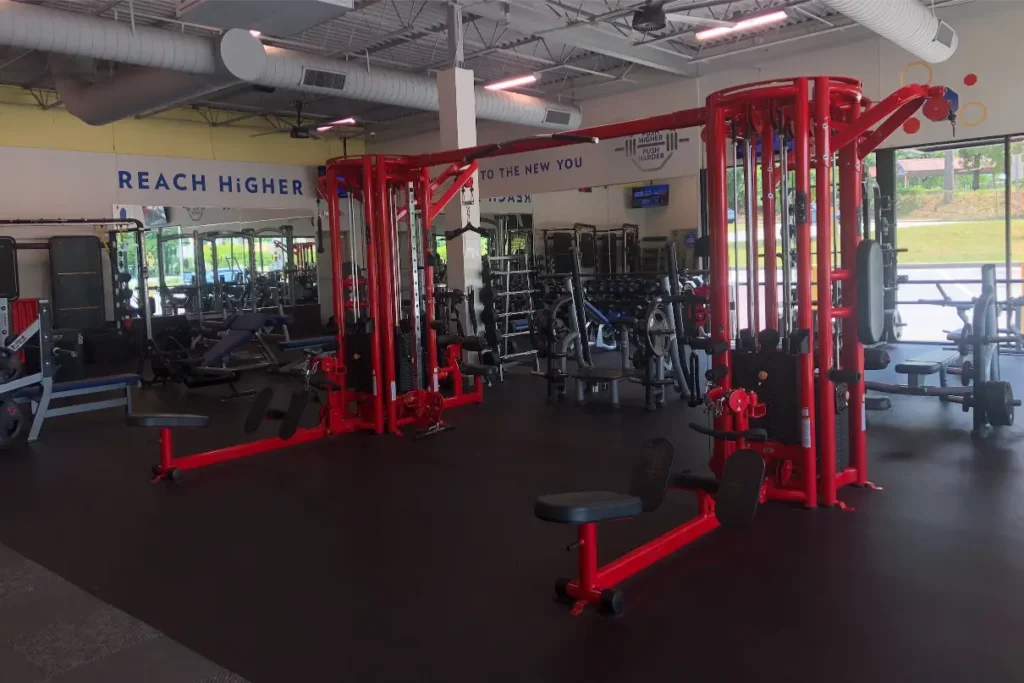If you’re looking to ignite your fitness journey, HIIT is a powerhouse that promises to deliver. But how often should you actually do these types of workouts? Yes, a HIIT workout is effective, but it is also intense. So let’s find that perfect spot.
Getting to know better High-Intensity Interval Training
At its core, HIIT is a training technique that involves intense bursts of exercise followed by short recovery periods. This cycle is repeated several times, creating a workout that is both efficient and effective. The beauty of HIIT lies in its versatility and adaptability. Whether you’re a seasoned athlete or a fitness newbie, HIIT can be tailored to your skill level.
Key Benefits of HIIT: A Game Changer for Fitness Enthusiasts
HIIT is not just about saving time; it’s a holistic approach to fitness that offers a multitude of benefits:
- Efficient calorie burn: HIIT is one of the most effective ways to burn more calories in a shorter amount of time.
- Improved cardiovascular health: Regular HIIT sessions can enhance your heart health and increase your VO2 max, a measure of your body’s ability to utilize oxygen during exercise.
- Increased metabolic rate: HIIT can boost your metabolism, helping you burn more calories even after your workout is over.
- Muscle building and preservation: Unlike traditional cardio, HIIT can help build and preserve lean muscle mass while targeting fat loss.
- Convenience: HIIT workouts can be done anywhere, with little to no equipment, making them perfect for those with busy schedules.
Finding the ideal frequency for HIIT success
Finding the sweet spot for HIIT frequency is crucial to maximizing its benefits while minimizing the risk of injury and burnout. Here are some guidelines to help you determine the optimal frequency for your HIIT workouts:
- For beginners: Start with 2-3 HIIT sessions per week, allowing at least one day of rest or low-intensity exercise in between.
- For intermediate to advanced: Aim for 3-4 HIIT sessions per week, with rest days or active recovery days interspersed.
- Follow your body’s lead: Pay attention to how your body responds to the workouts. If you feel overly fatigued or experience signs of overtraining, it’s time to scale back.
The crucial role of rest days in HIIT regimens
Rest days are not just about taking a break; they’re an integral part of your HIIT routine. They allow your muscles to recover, rebuild, and grow stronger. Incorporating rest days or active recovery days (like walking or gentle yoga) into your schedule is essential for long-term success and injury prevention.
For those who want to take recovery to the next level, try Recovery Lab at HiTone Fitness. It is ideal for relaxing, boosting energy levels when you feel a little bit down, or recovering like a pro after an intense workout. If you are in South Congaree, get your 3-day free pass and try Form Lab without any additional cost.
Recognizing the signs of HIIT overkill
While HIIT is known for its intensity, there is such a thing as too much of a good thing. Be on the lookout for signs of overtraining, such as:
- Persistent fatigue
- Decreased performance
- Insomnia
- Increased susceptibility to illness
- Mood swings or irritability
If you experience any of these symptoms, it’s a clear signal that your body needs more rest and recovery time.
Is daily HIIT a safe practice?
Daily HIIT is generally not recommended, as it can lead to overtraining and increase the risk of injury. HIIT is intense by nature, and your body needs time to recover and adapt to the stress of the workouts. For most people, 3-4 HIIT sessions per week are sufficient for achieving fitness goals while allowing for proper recovery.
Can people with health concerns embrace HIIT workouts?
Individuals with health concerns should consult with a healthcare professional before starting a HIIT program. While HIIT can offer numerous health benefits, it may not be suitable for everyone, especially those with certain cardiovascular conditions, joint problems, or other health issues. A modified, lower-intensity version of HIIT may be recommended for some individuals.
Final thoughts
HIIT workouts are a dynamic and powerful tool in your fitness arsenal, offering a plethora of benefits from efficient calorie burn to improved cardiovascular health. However, the key to reaping these rewards lies in finding the right balance between intensity and recovery.







